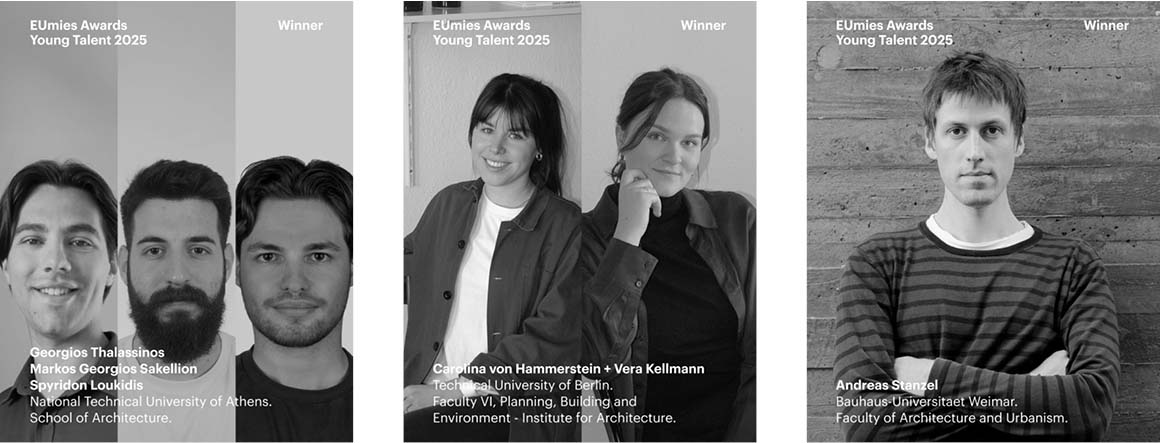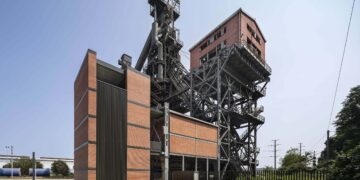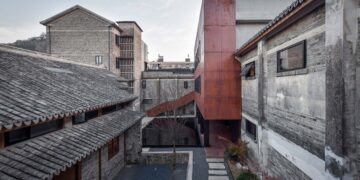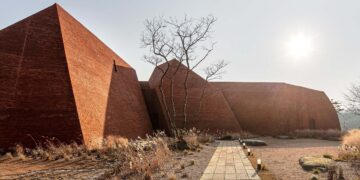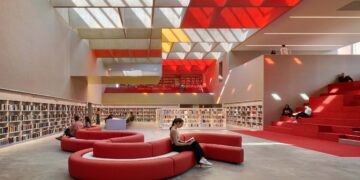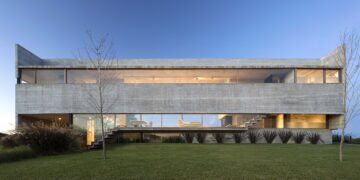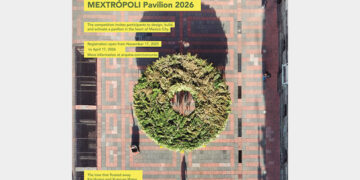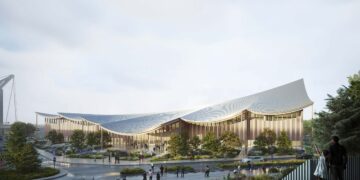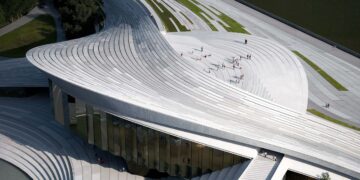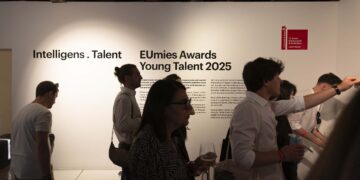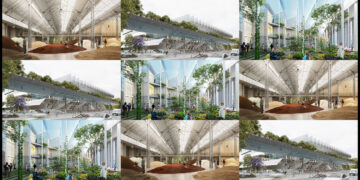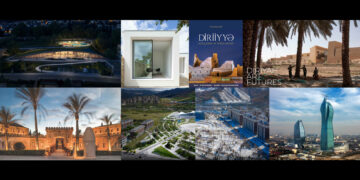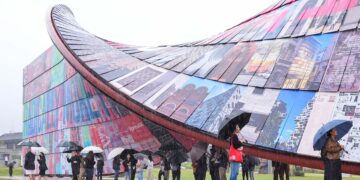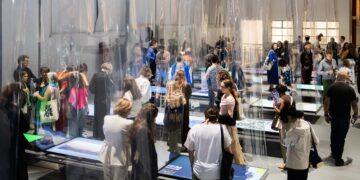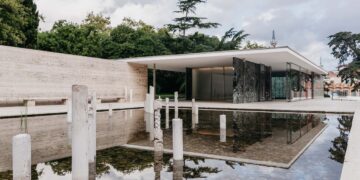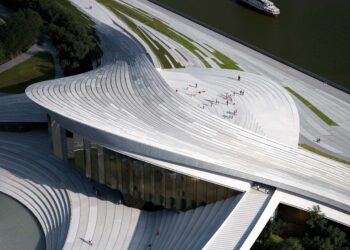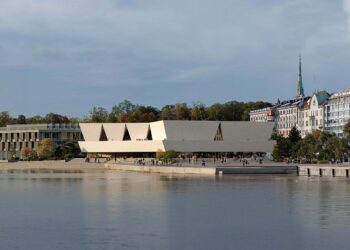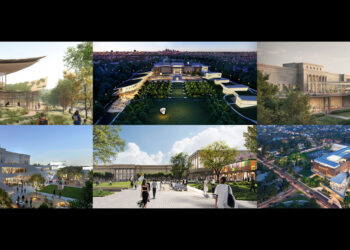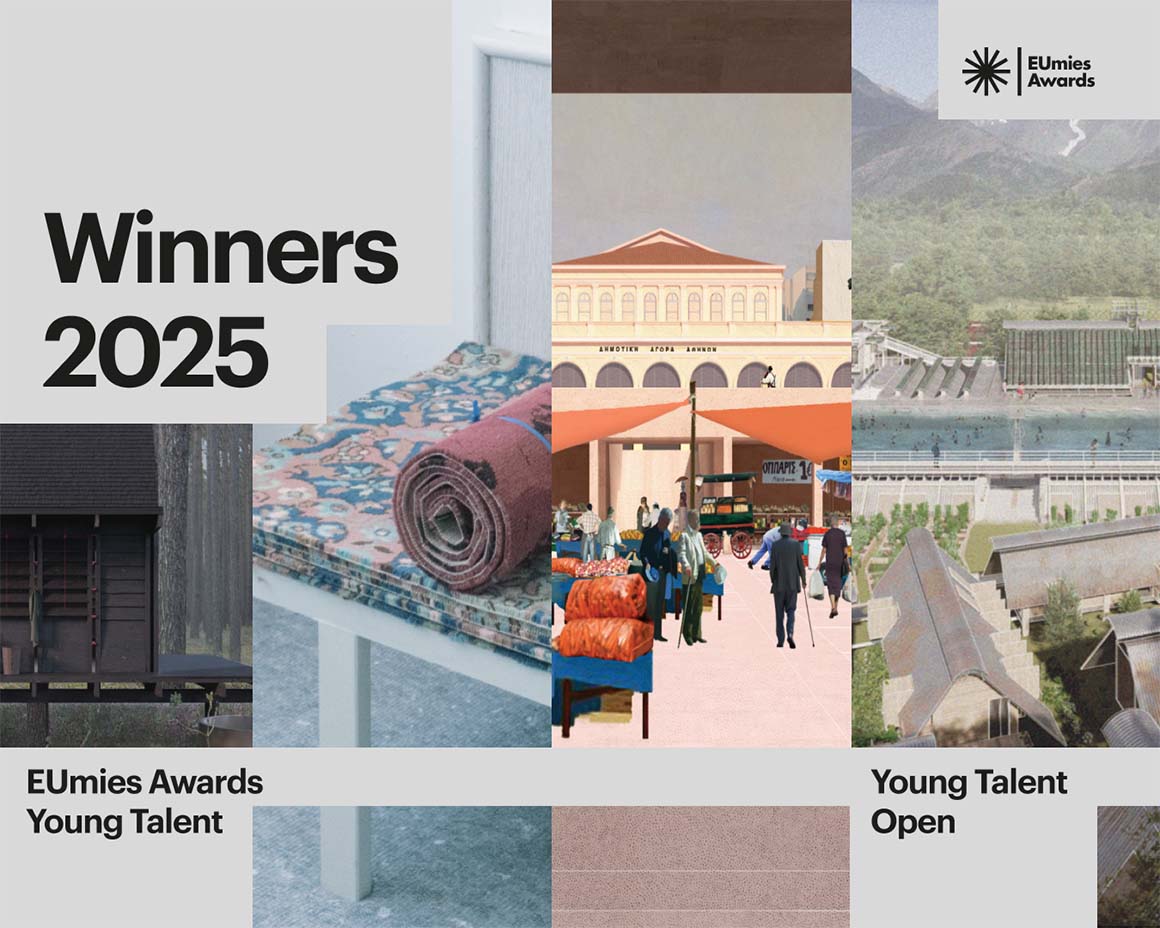
The results of the EUmies Awards Young Talent 2025, a platform for exploring the future possibilities of European architecture, have been announced. Organized by the Fundació Mies van der Rohe, the EUmies Awards is a contemporary architecture prize within the European Union that focuses on the relationship between architecture and socio-cultural development, recognizing innovative and significant architectural projects across Europe. Among these, the ‘Intelligens. Talent. EUmies Awards Young Talent 2025’ serves as an opportunity to highlight outstanding student projects addressing social, urban, and environmental challenges, showcasing three selected projects alongside an award ceremony and the unveiling of their models. Photograph: ©Flavia Rossi, ©Matteo Losurdo

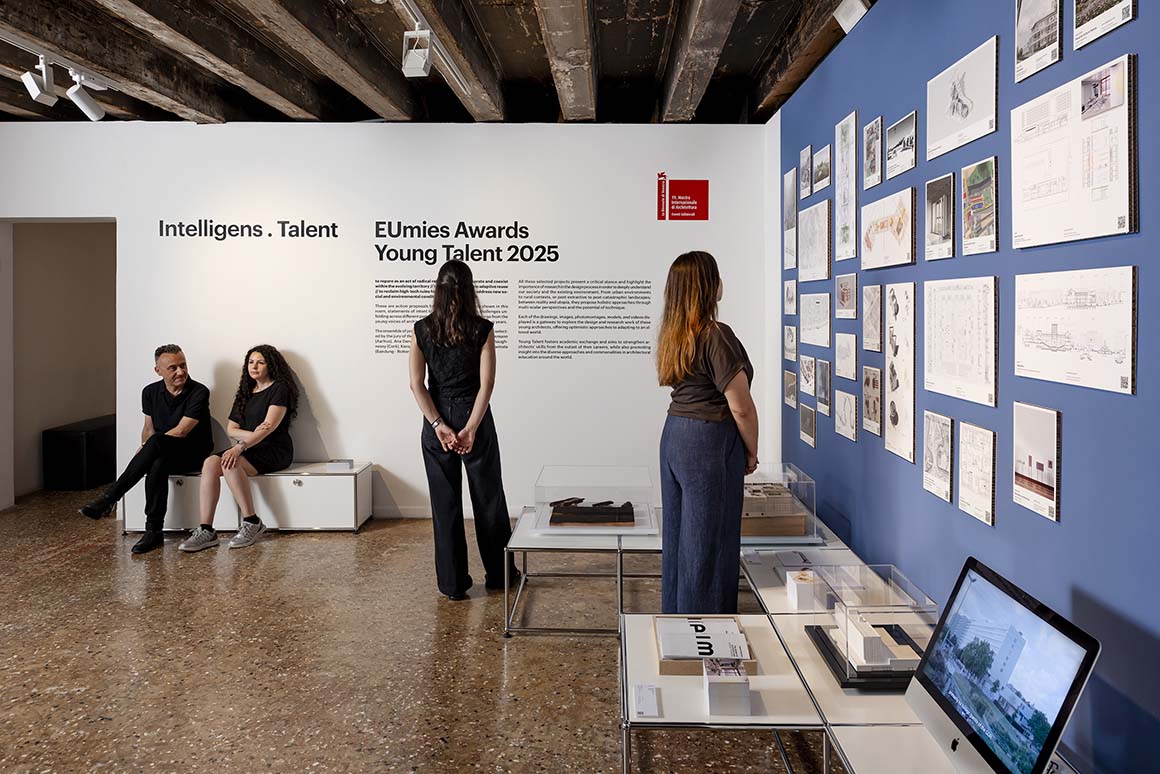
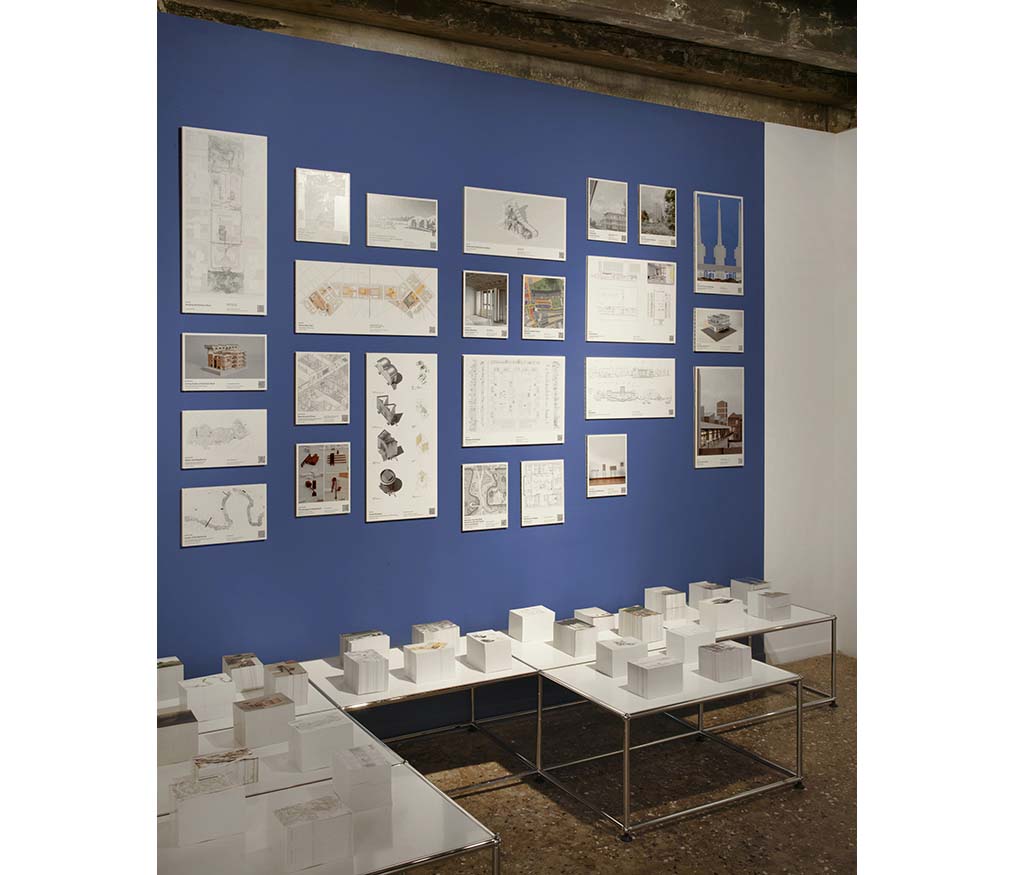
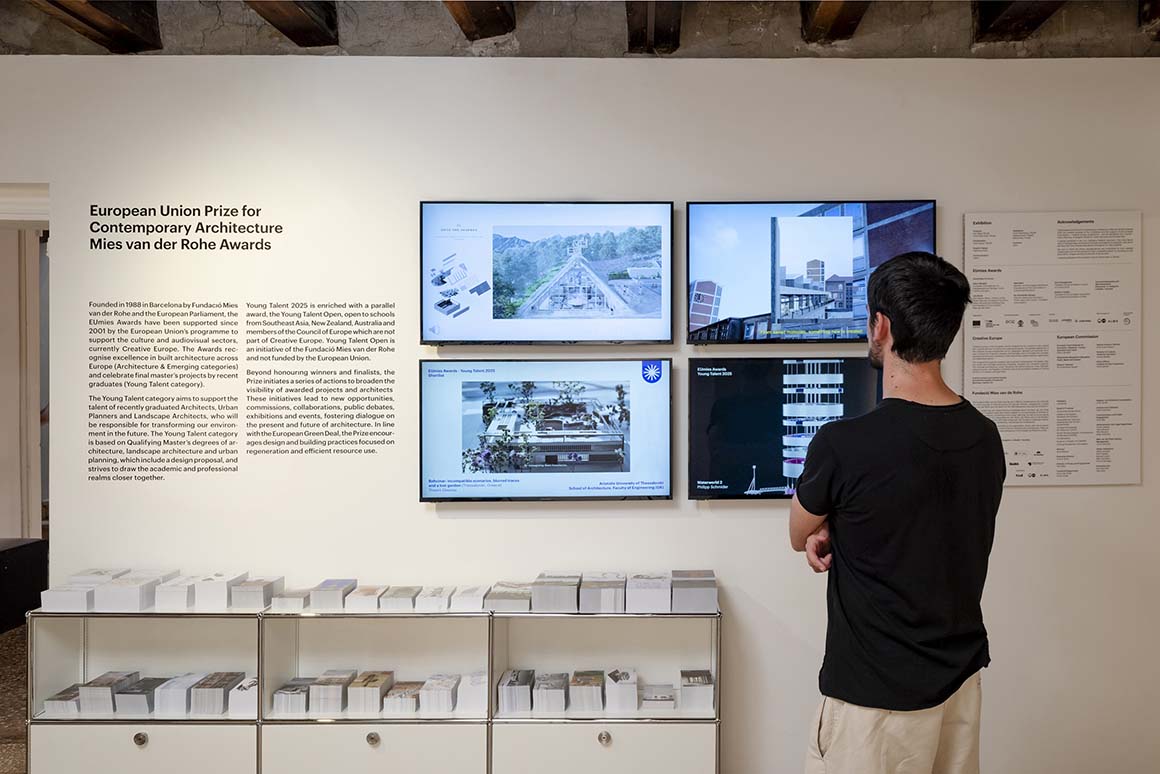
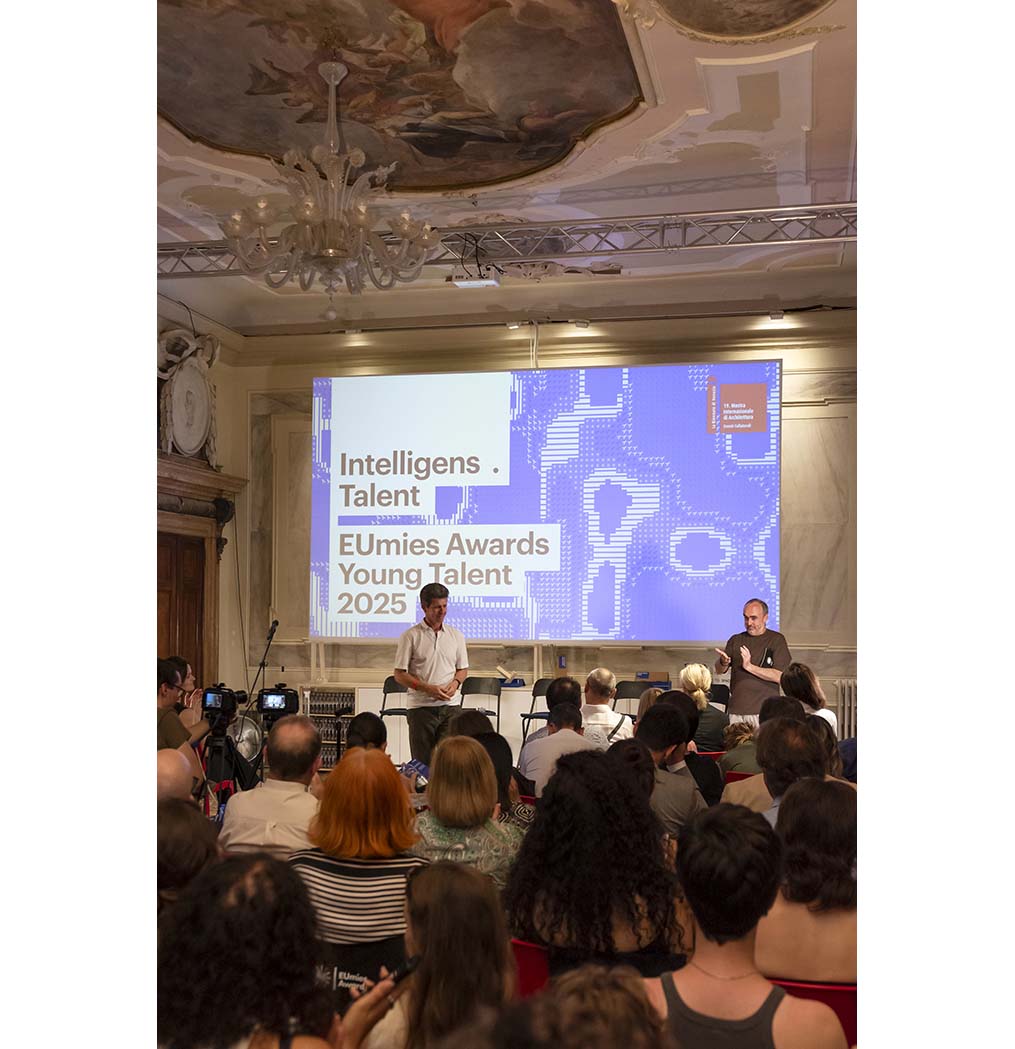
1. Brave New Axis
Georgios Thalassinos, Markos Georgios Sakellion, Spyridon Loukidis
National Technical University of Athens.
School of Architecture.
The first project, Brave New Axis, reconfigures Athens’ urban grid to create new connections. The axis, a virtual line that connects and divides space and movement, embodies unseen multiplicities. Beginning with the question, “If the axis changes, does the entire framework transform?” the project redefines the rigid 19th-century line as a series of dynamic points encountered along a journey. The axis connects five main spaces: a square with a garden, arcade-like labyrinths, a forum, the phalanstery as a shared housing space, and former parking lots transformed into public zones, all intricately linked.
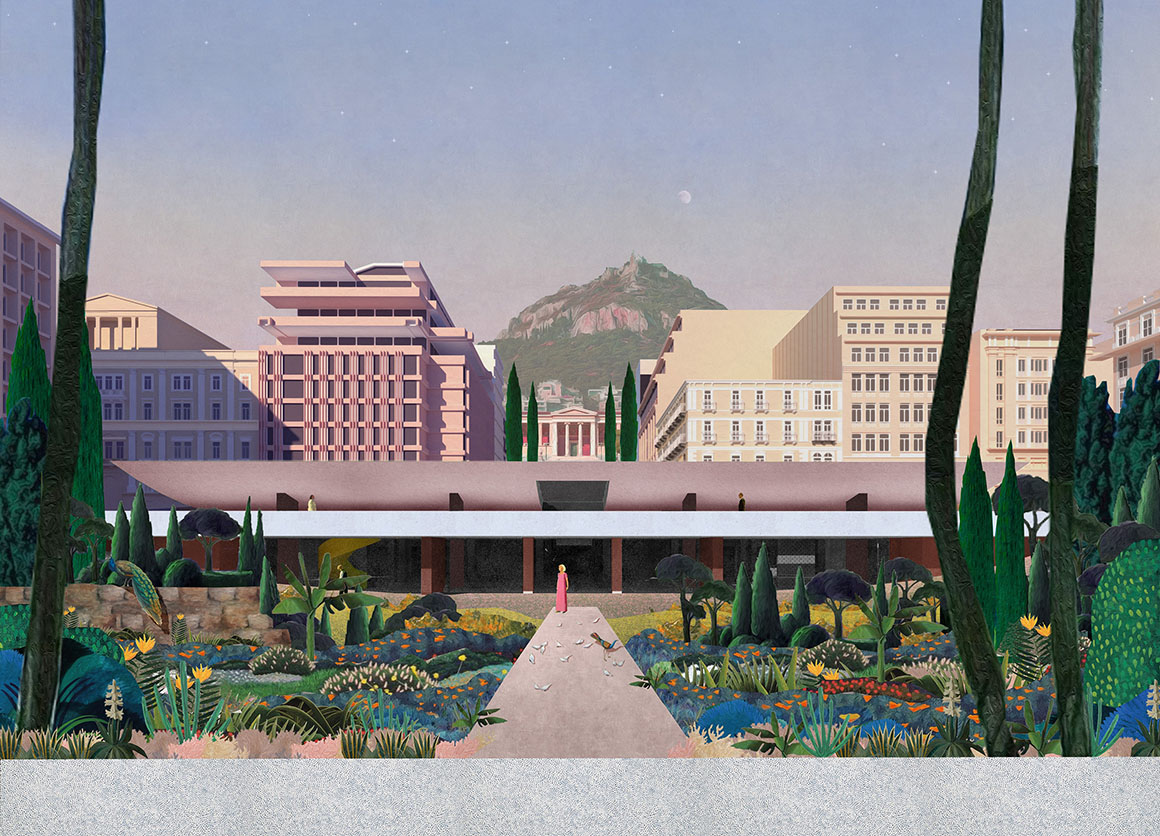


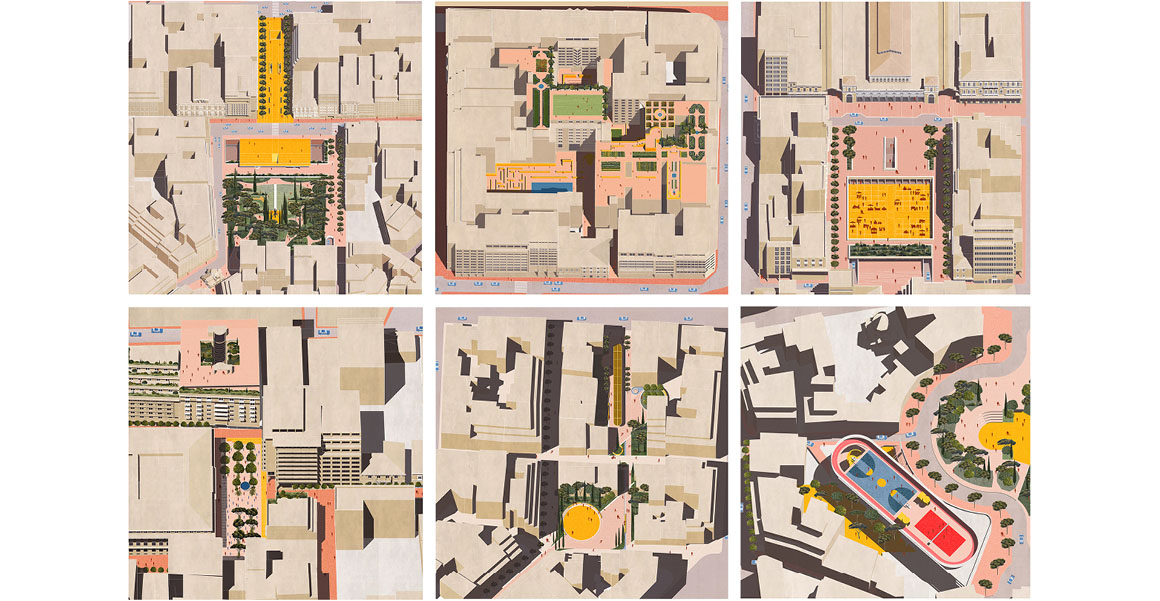
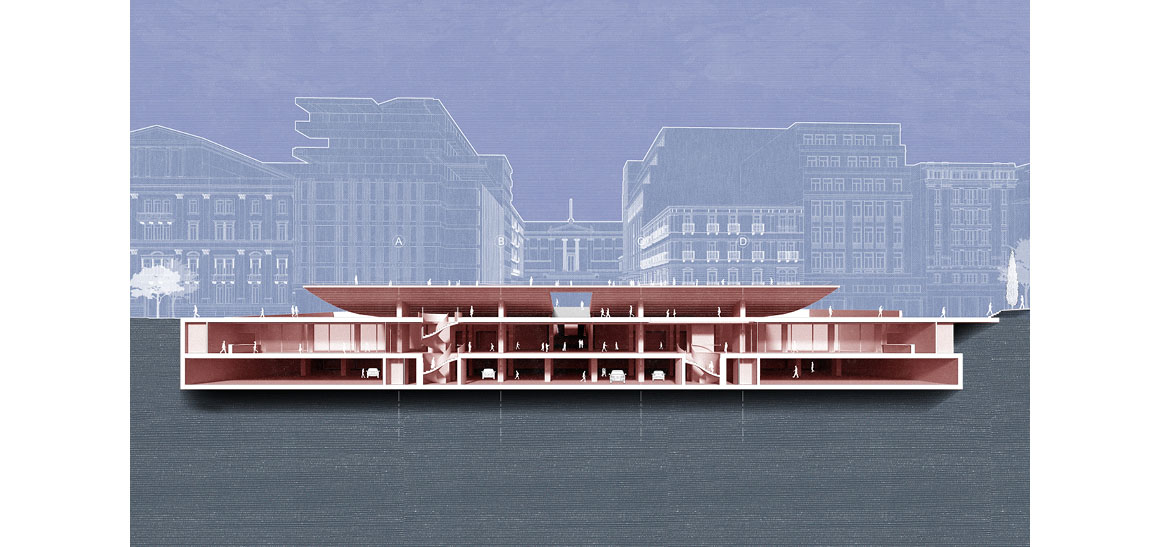

2. Forest & Phoenix
Carolina von Hammerstein + Vera Kellmann
Technical University of Berlin.
Faculty VI, Planning, Building and Environment – Institute for Architecture.
The second project, Forest & Phoenix, addresses the increasing frequency of forest fires due to climate change, reflecting the belief that architecture should transcend mere design outputs to become a practice encompassing diverse forms of knowledge. The preliminary work compiles knowledge into summaries and visualizes it through analytical drawings and diagrams. The resulting Brandenburg Forest Fire Competence Center acts as a hub for collaboration among forestry, firefighting, and science, facilitated by hybrid structures that foster synergy. Its four structures form a decentralized network, while charred trees from forest fires are repurposed as sustainable resources.
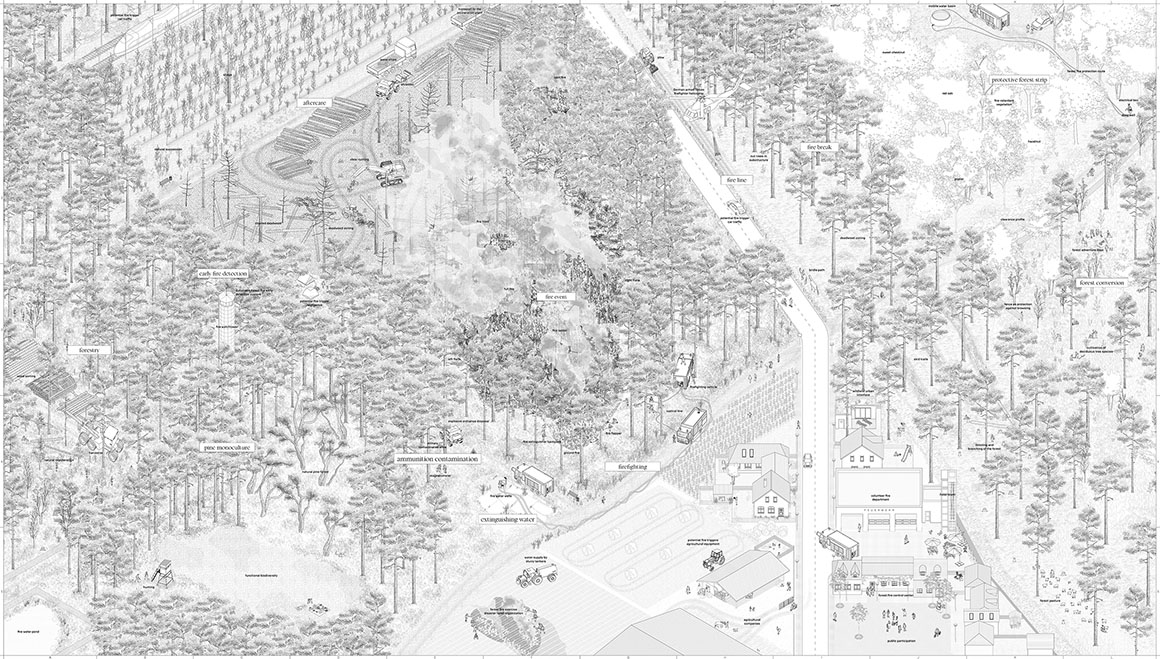
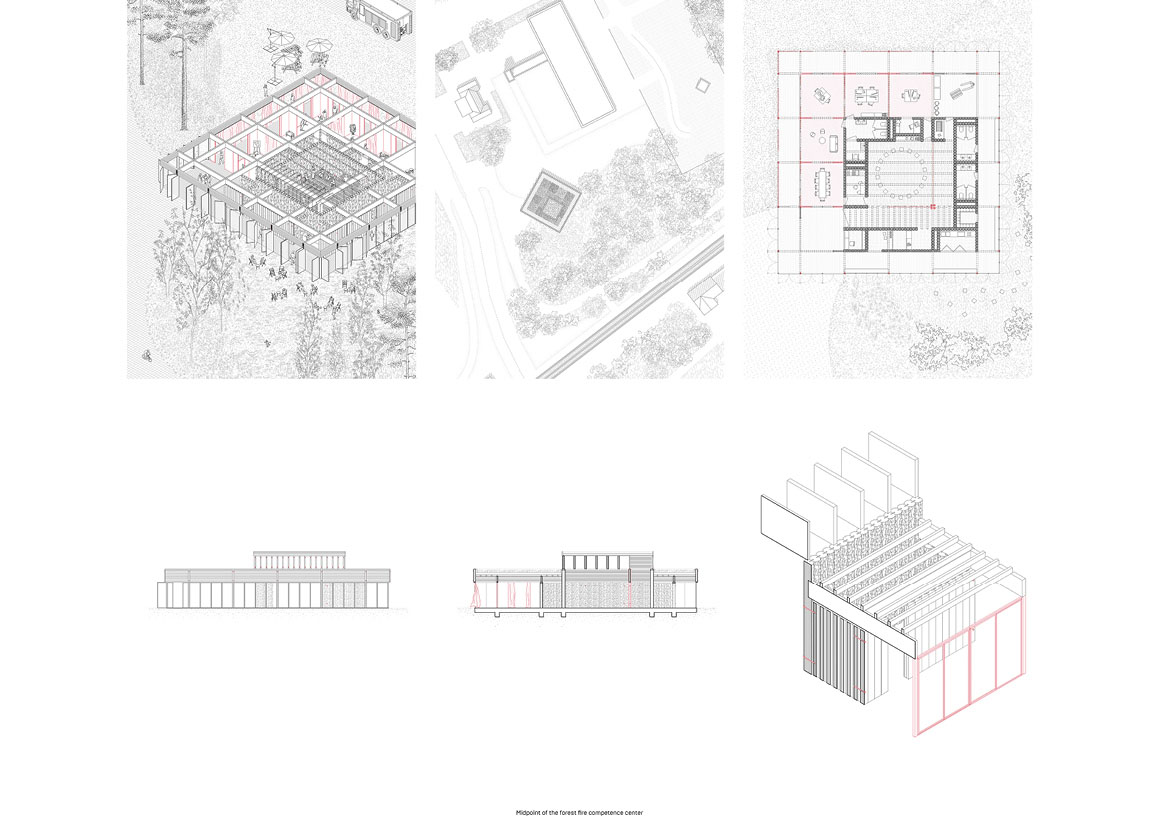
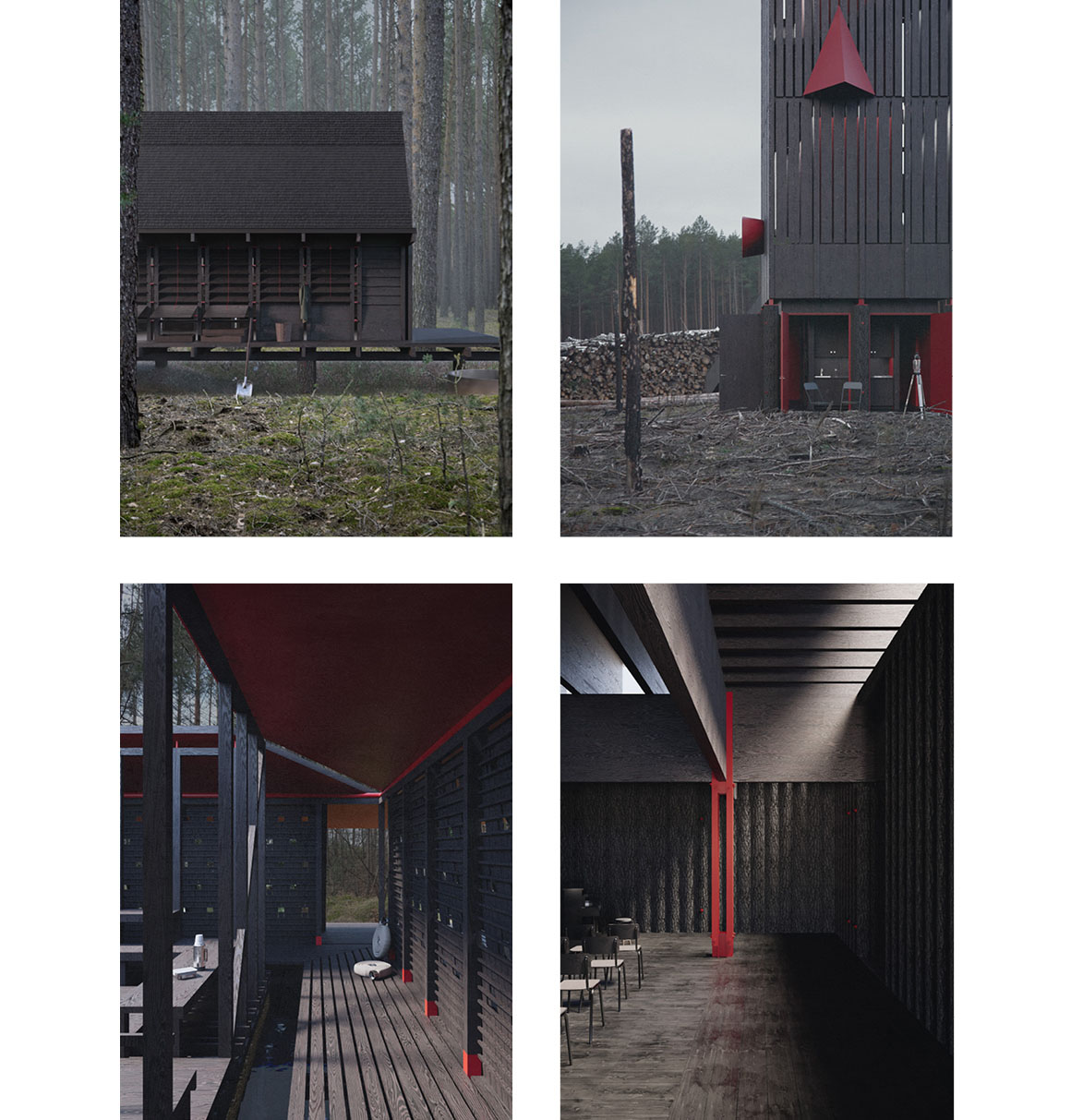

3. Hotel Interim
Andreas Stanzel
Bauhaus-Universitaet Weimar.
Faculty of Architecture and Urbanism.
The third project, Hotel Interim, reevaluates the material and immaterial value of a condemned hotel building, exploring its potential as a space for the arts. It demonstrates how architecture can prevent the disappearance of buildings in uncertain times. The hotel, awaiting demolition since 2022, has its intangible heritage documented through interviews with the technician who maintained it for 47 years. The building’s embedded grey energy was calculated to assess the environmental impact of demolition, while it was repurposed to house student studios, artist residencies, and community centers for Burg Giebichenstein University of Art and Design, fostering artistic and social exchange.

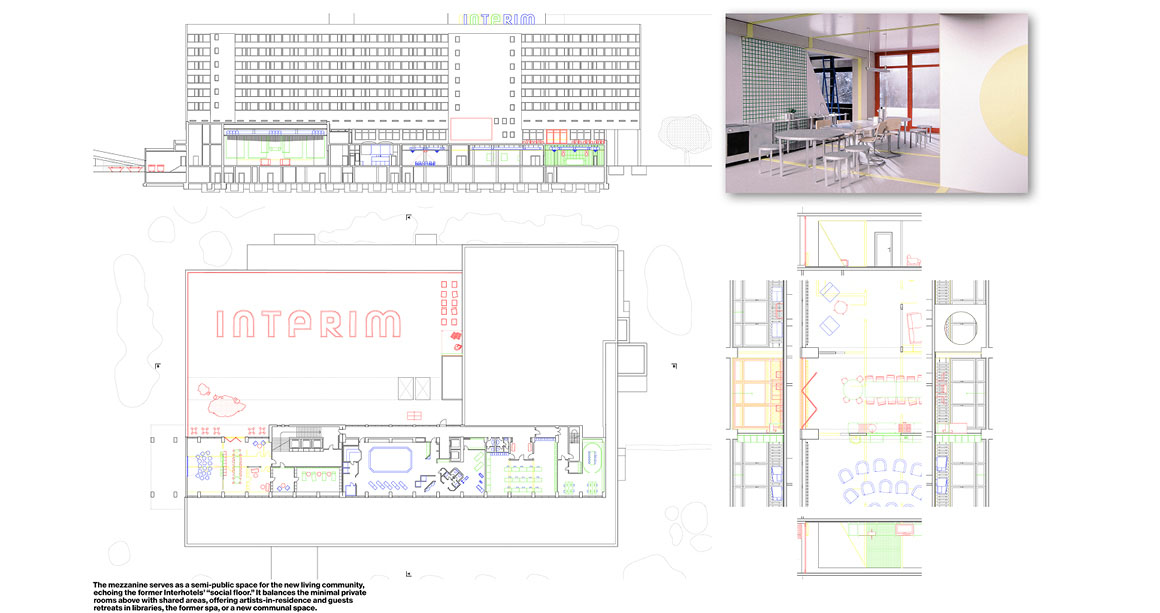
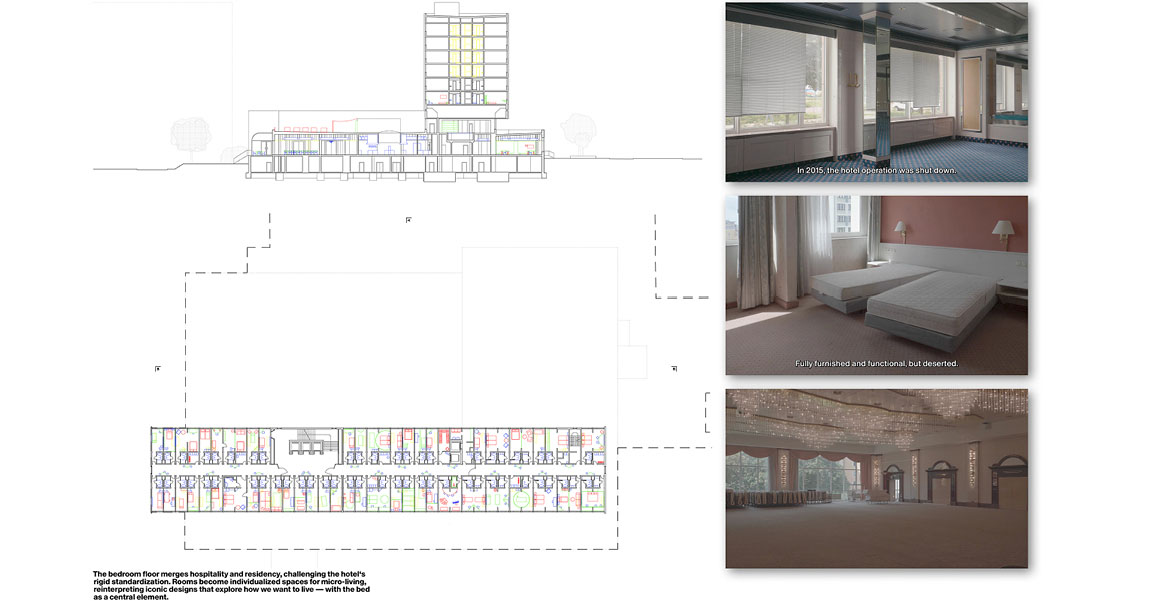

These three selected projects address themes of urban fragmentation, climate resilience, reuse, and community-driven design. The jury noted that they reflect a generation of architects attuned to the complexity of contemporary society. Designing spaces that embody Europe’s history, shared values, and future aspirations means creating sustainable, inclusive, and resilient environments. This competition carries significant meaning as a platform for young architects to envision a future Europe shaped by the shared vision of today’s generation.
